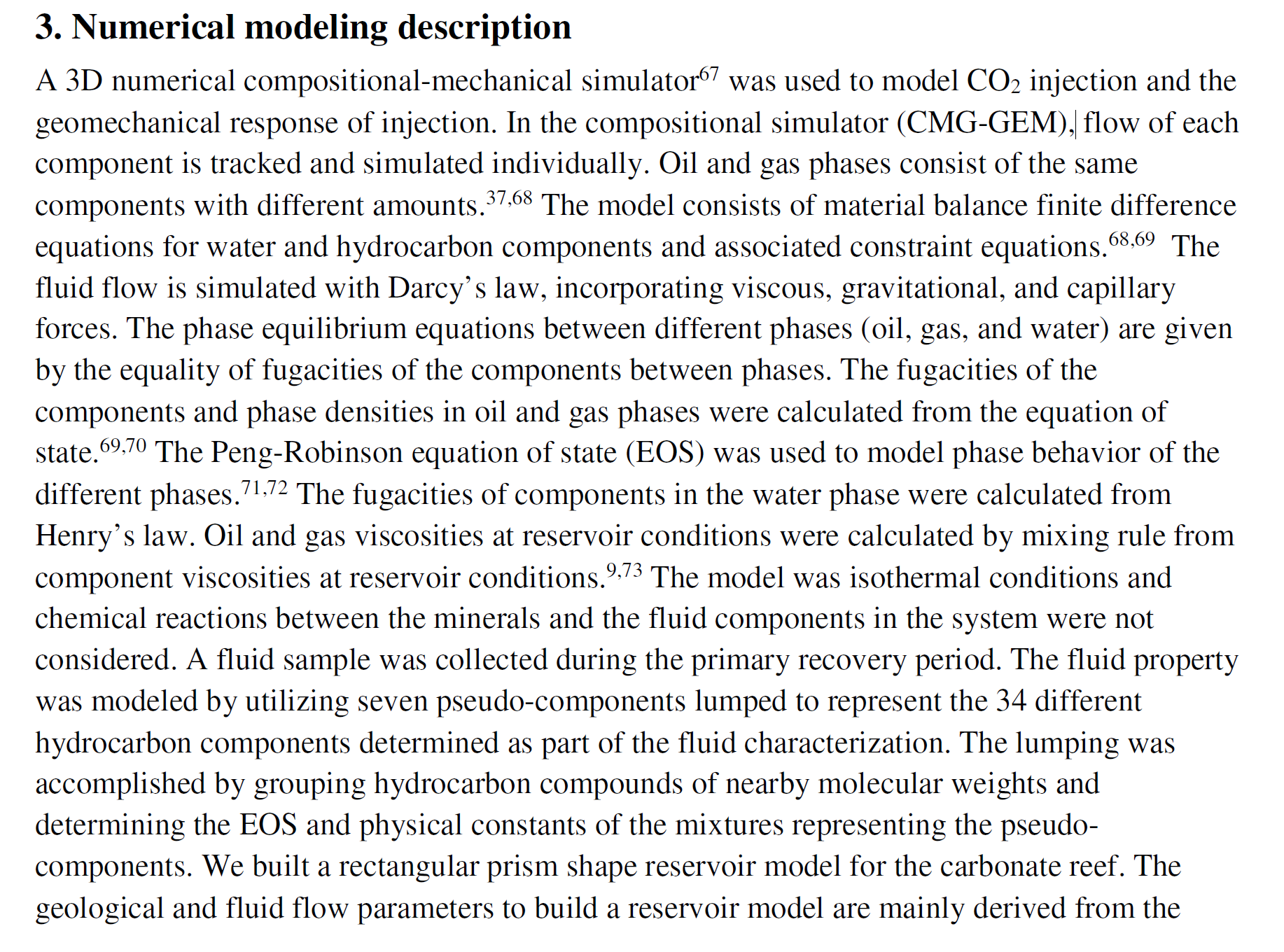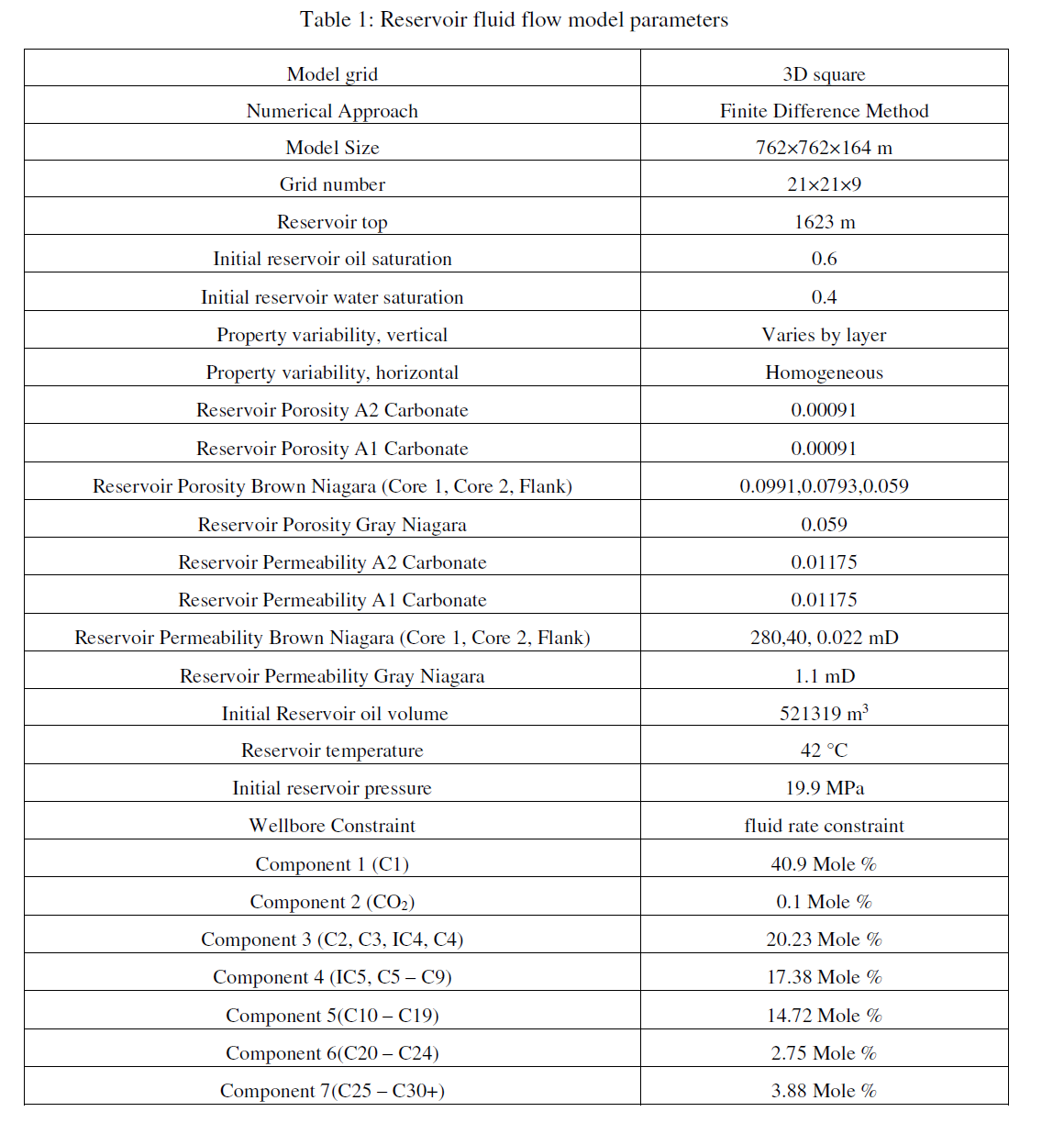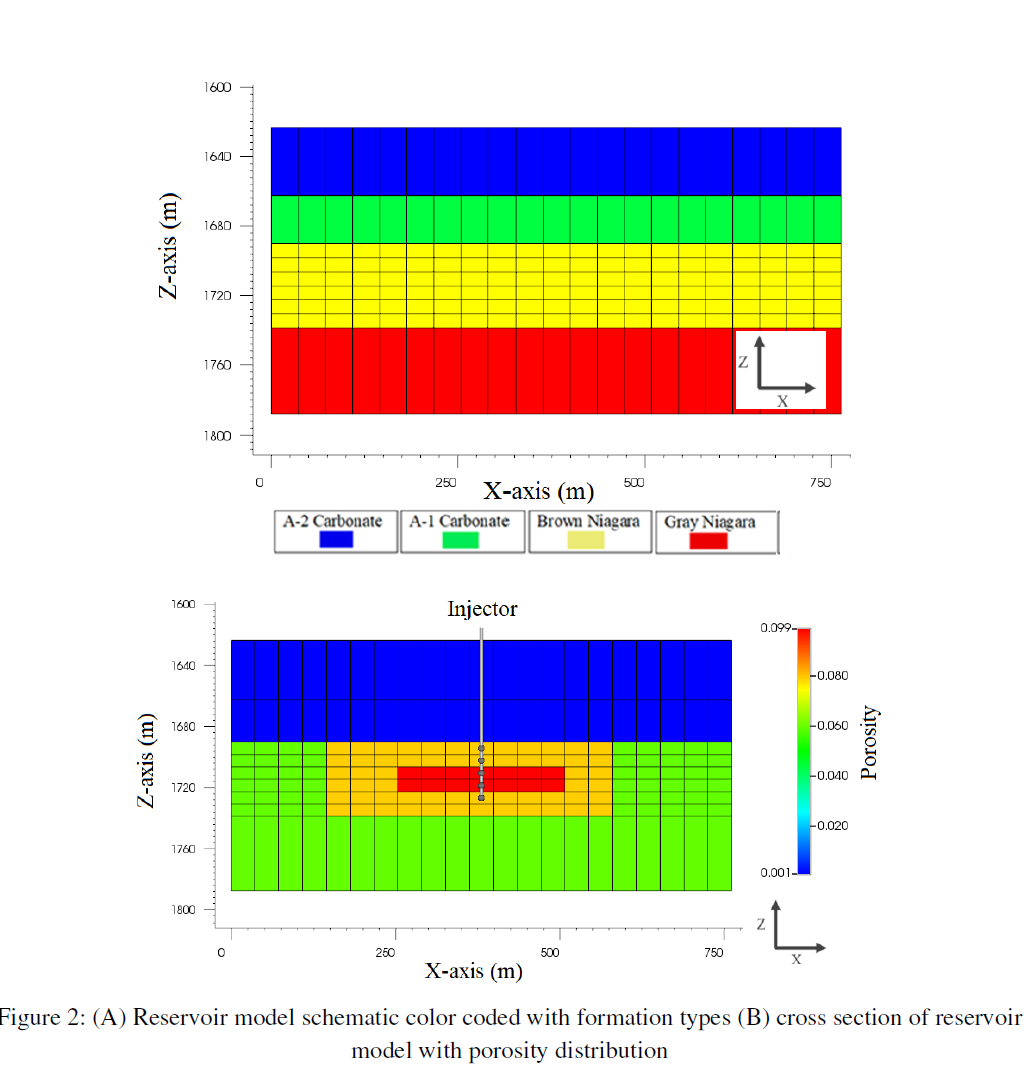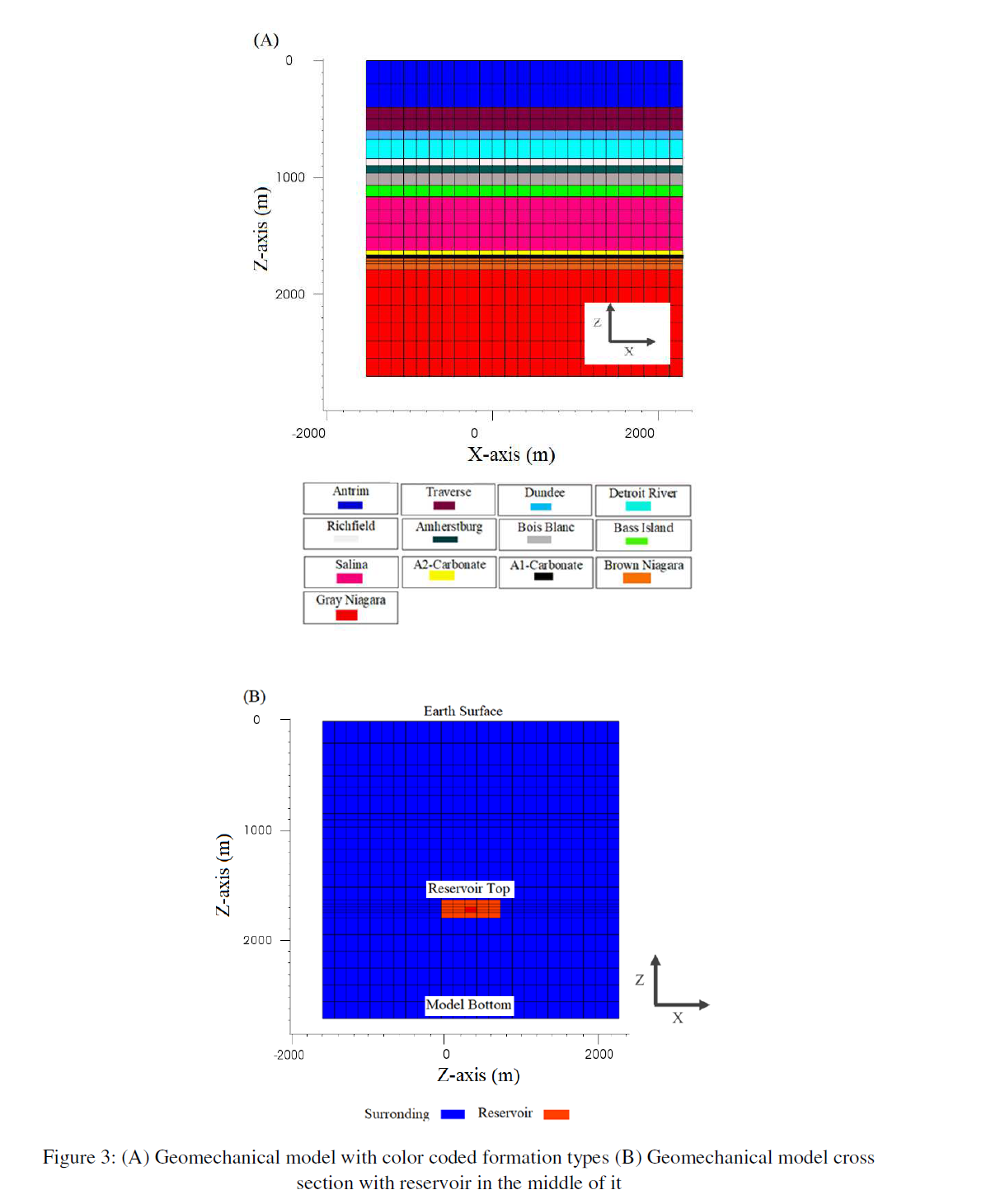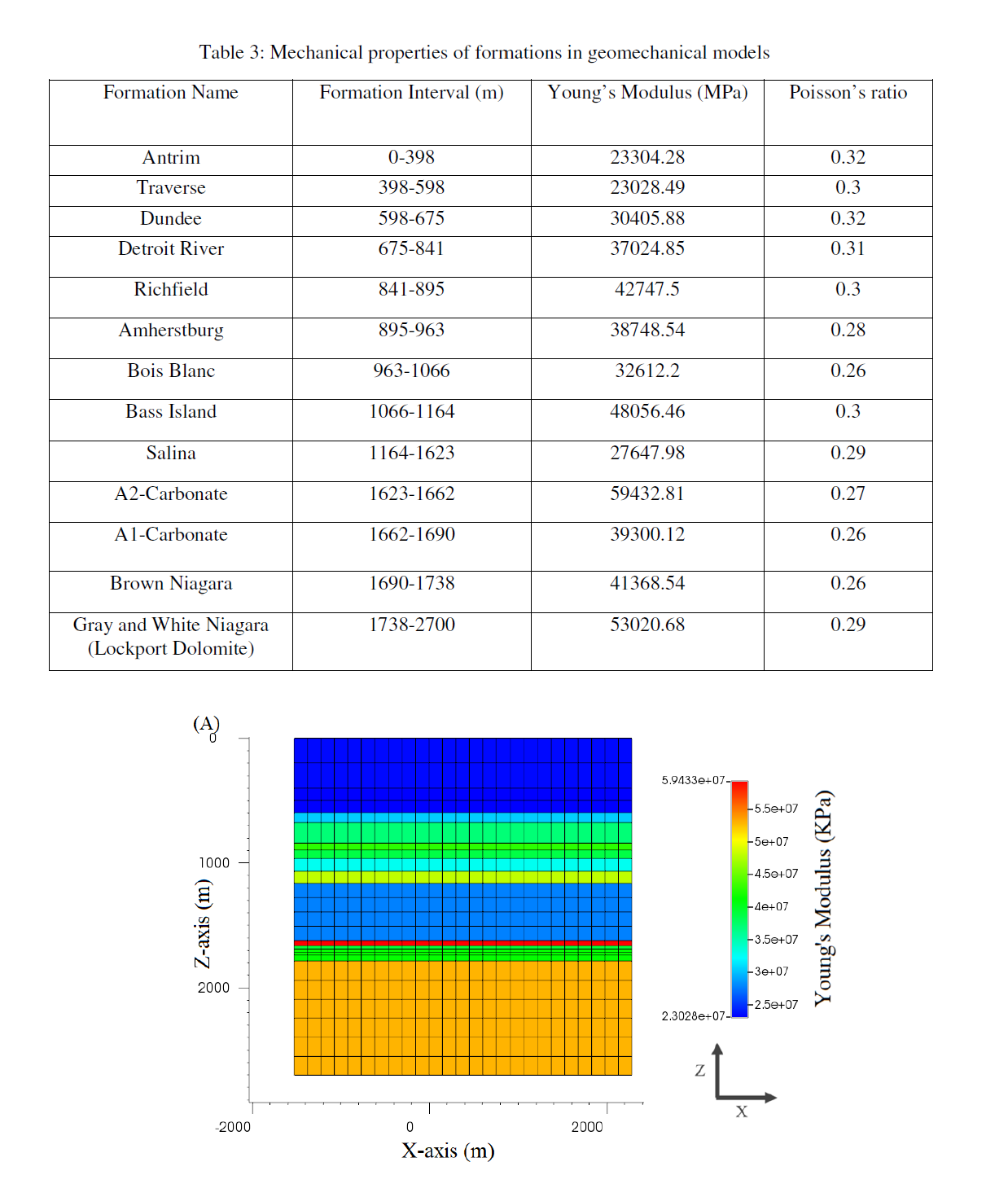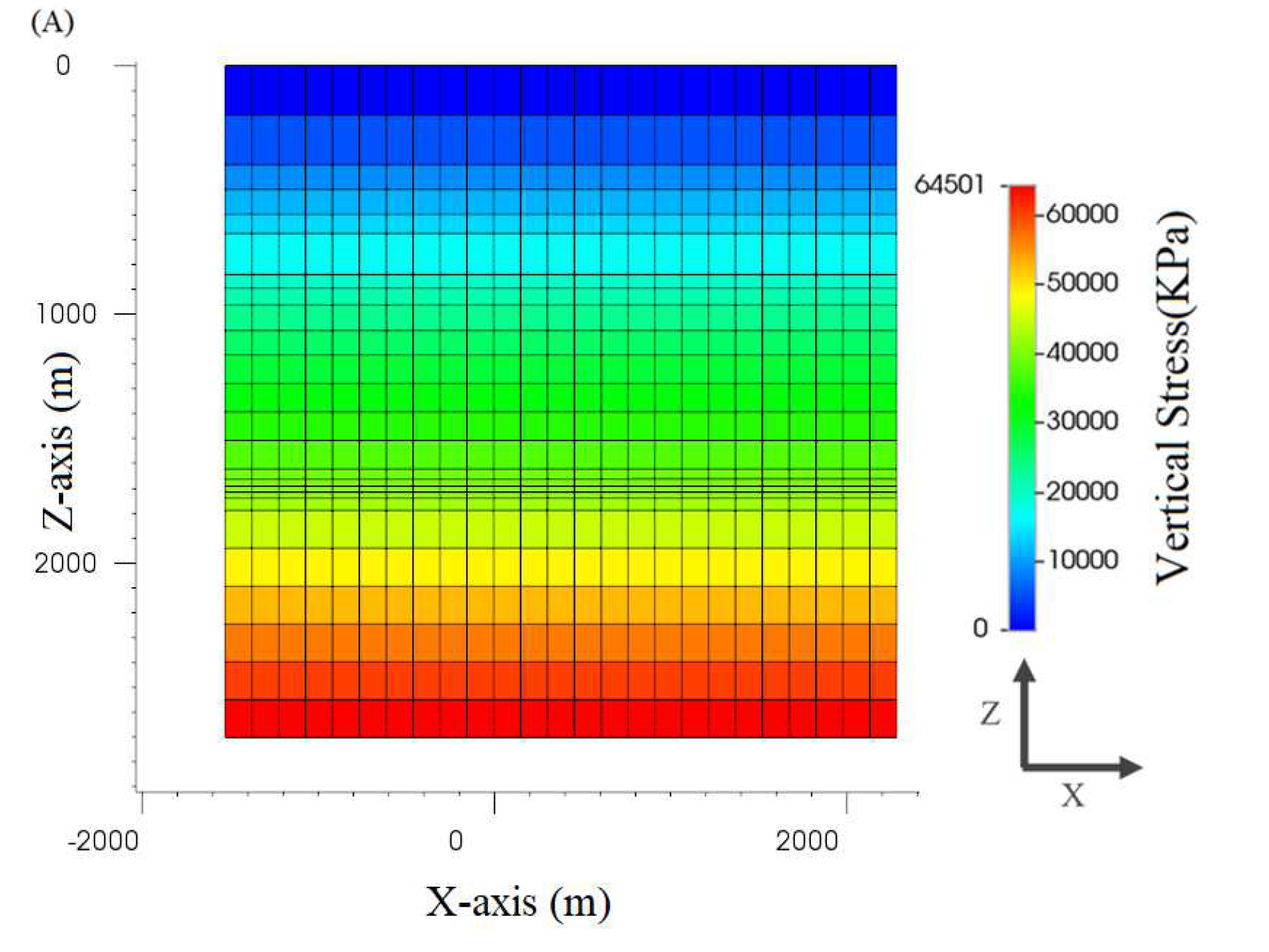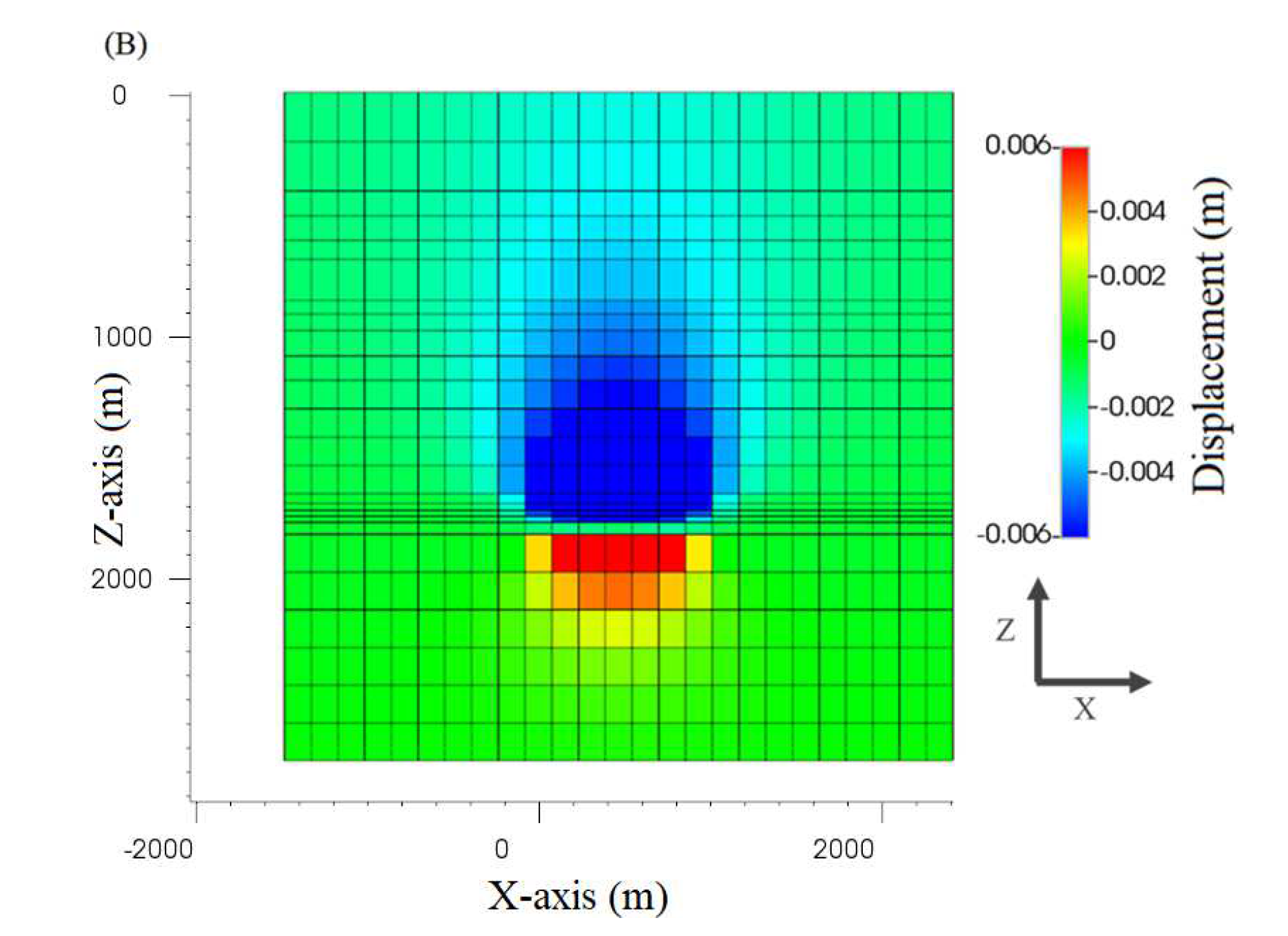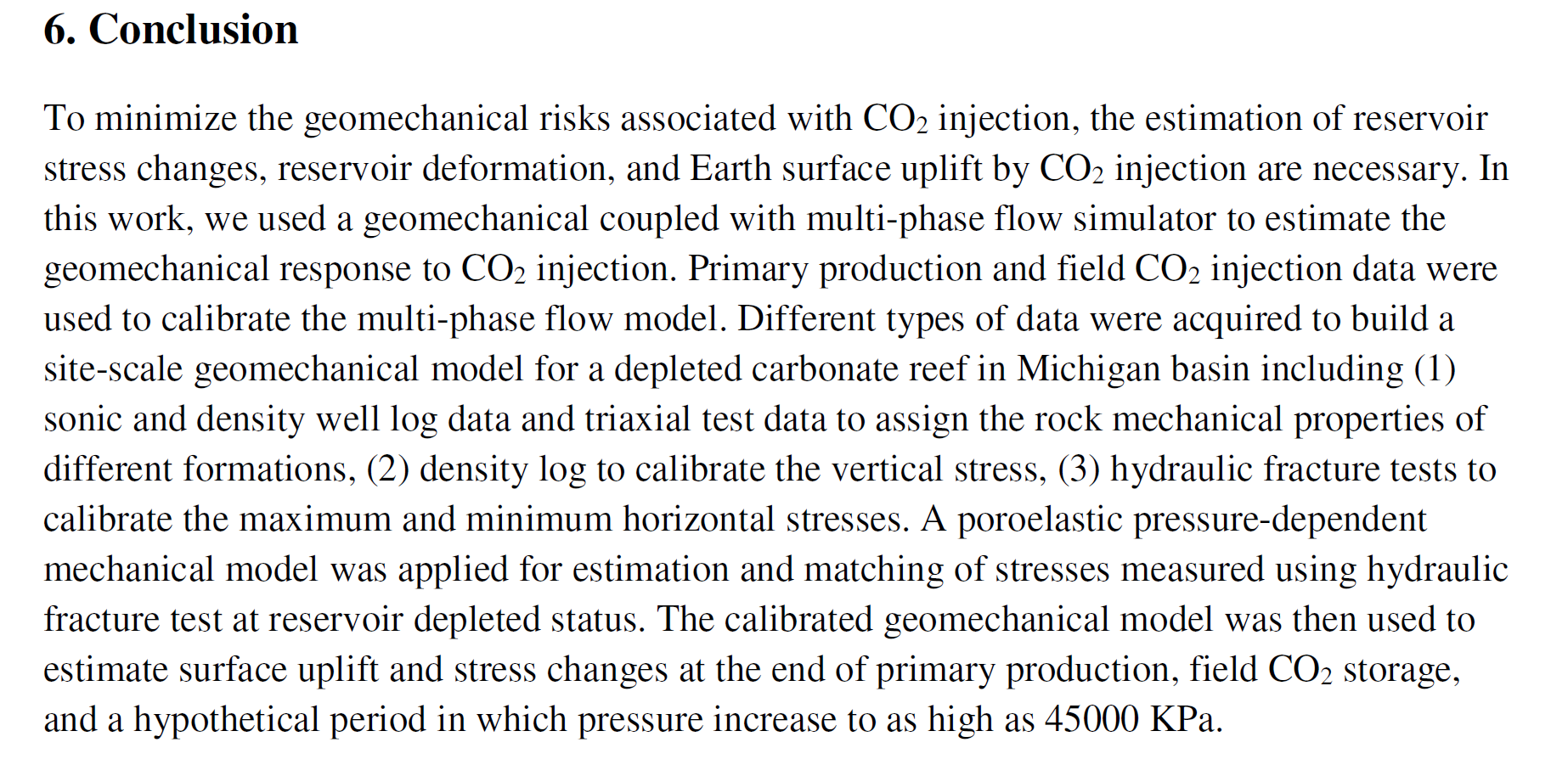Assessing mechanical response of CO2 storage into a depleted carbonate reef using a site-scale geomechanical model calibrated with field tests and InSAR monitoring data
Abstract
Geomechanical risks of injection have raised concerns regarding secure CO2 storage. In this work, a combined monitoring and modeling approach is used to assess the stress changes and surface uplift associated with CO2 injection into a depleted carbonate reef of the Michigan basin. A site-scale geomechanical model is built by assigning mechanical properties of formations using well-log and experimental data. Gravity load is applied to the model to estimate the vertical component of stress as well as different lateral boundary displacement scenarios to estimate horizontal stresses.
We used a poroelastic pressure-dependent model (instead of a linear elastic mechanical earth model) to calibrate initial stresses using hydraulic fracture test data measured at depleted reservoir status. Multi-phase fluid flow-geomechanical simulations are performed to estimate the poroelastic response during (1) primary depletion (2) field-scale CO2 injection phase (3) a hypothetical forecast scenario in which well bottom hole pressure (BHP) reach 45000 KPa. The predicted surface uplift is less than 1 mm at the end of the field-scale CO2 injection phase which is in good agreement with Interferometric Synthetic Aperture Radar (InSAR) uplift measurement. Although the InSAR data shows an insignificant uplift, hydromechanical modeling of injection shows that CO2 injection still causes reservoir deformation emphasizing the role of carbonate overburden and reservoir formation mechanical properties and limited size of reef on diminishing the surface deformation.
Modeling indicates poroelastic response of caprock matters to estimate uplift. The lower permeability of the top two layers provides additional barrier to large uplift. Also, history of subsidence due to production should be accounted to predict uplift due to a follow up injection correctly. This report shows the significance of combining a calibrated geomechanical model with field measured stresses and monitoring data to be used as a tool to ensure the safety of CO2 storage.
